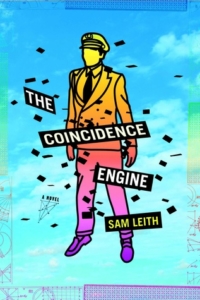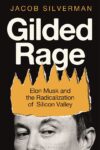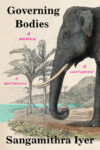The cross-country adventure novel has an ethos of its own: long miles on endless highways, dingy lodging, sprawling plains, and strange characters. The wide-openness offers a unique kind of blank canvas and The Coincidence Engine, journalist Sam Leith’s debut novel, tries to generate something uncommon with the form. However, Leith’s combination of self-exploration, humor, and spy pursuit ultimately feels like a hodgepodge rather than a successful synthesis of ideas.
The novel spans the States in a pursuit for the mysterious “coincidence engine” that has improbably caused a hurricane to assemble a Boeing 737 and place a male stripper in the cockpit. Two shadowy agencies — the Directorate of the Extremely Improbable and MIC Industrial Futures — track the movement of improbability west across the United States and send out agents to find a Cambridge math student named Alex Smart, who has no idea that he has the “engine” and no idea he’s being pursued. As the chase unfolds, unlikelihoods abound: the odds tilt against the house in Las Vegas blackjack, choirs of birds sing “Amazing Grace,” Rice-A-Roni sells out at a record pace. We come across a brilliantly mad mathematician named Banacharski who may have spawned the “engine” straight from his mind, and a secret agent named Bree who only eats fast food and Jolly Ranchers.
Coincidence is the name of the game, and to weave such a strange web together, the novel employs large amounts of exposition — the first third is mostly scenes that set up later action (including action told from the perspective of characters we never meet again), and new plot arcs are regularly introduced throughout by way of pure explanation. A hundred and sixty pages in, while chasing Alex across the country, it is revealed that Bree had been an alcoholic and that she lost custody of her daughter due to heavy drinking. This information isn’t the result of an encounter or event — it’s just spilled by the narrator after a scene break.
As the book progresses, it has difficulty juggling its largely unrelated elements of plot and character; there is no internal rationale for why so much of the last third of the story is given to introducing and exploring Bree’s alcoholism, and no rationale for why a story increasingly concerned with Alex’s flightiness and Bree’s estranged daughter ultimately benefits from the large schemata of a “coincidence engine.” One is not used to illuminate the other — there is essentially a two-part conclusion, where the “human drama” wraps up and then the “international mystery” is explained. These occur in two different places involving entirely different people, and the people explaining the latter are undeveloped characters.
For a novel billed as lighthearted, The Coincidence Engine often grasps at the weighty before receding into slapstick. Banacharski — in rural France with an ascetic’s beard — tells another mathematician about World War II, “My father died. My mother lived. My little sister died. I lived. Chance.” A far cry from the tone implied by the Directorate monitoring thousands of mediums (“media”) for subliminal messages.
At heart, the novel pulls in too many directions, tears from the strain of its own formal and thematic tensions. Leith shows flashes of great prose, but relies too heavily on the power of the merely odd for propulsion. The Coincidence Engine cycles through different levels of weirdness before discovering that it wants to be about struggles we have with ourselves — and by then, the novel’s machinery is wholly inadequate for the task.
This post may contain affiliate links.








